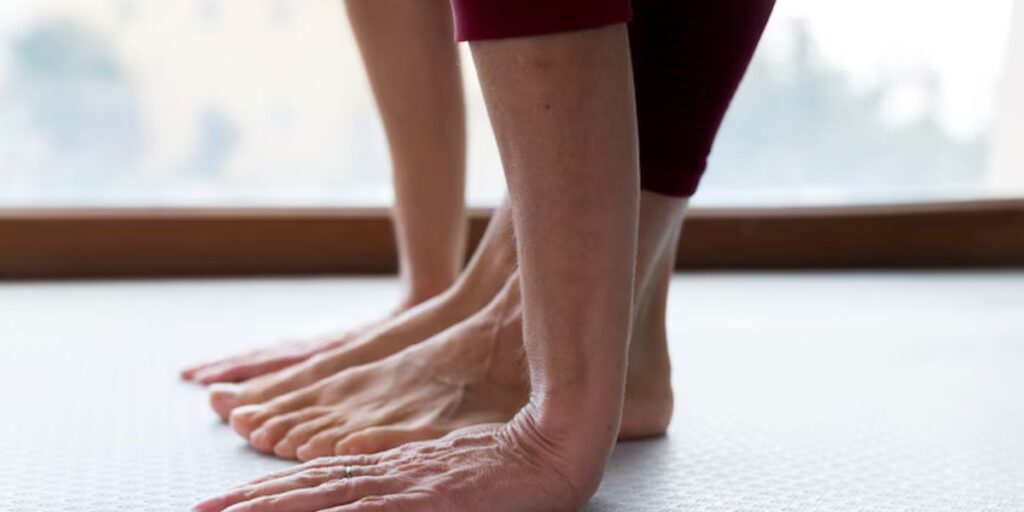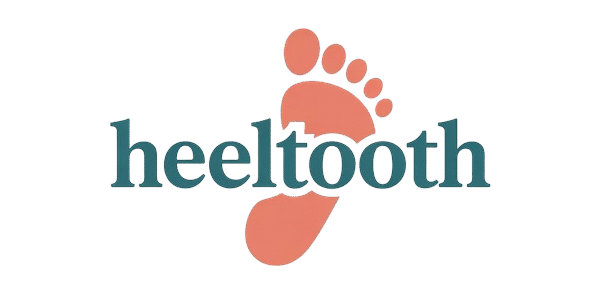If bunions are slowing you down, you’re not alone. Millions of Americans deal with pain, swelling, and foot misalignment caused by this common foot condition. The good news? You can take control with simple, targeted exercises for bunions. These movements are designed to ease discomfort, strengthen your foot muscles, and improve alignment—without the need for surgery. Whether you’re looking to prevent bunions or relieve existing pain, incorporating toe alignment exercises and gentle foot workouts into your routine can make a noticeable difference. This guide explores the best exercises for bunion relief and prevention and offers non-surgical bunion treatment tips you can use right at home. Let’s start your journey to pain-free feet.
Understanding Bunions: Causes, Symptoms & Risk Factors
A bunion forms when your big toe pushes toward your second toe. This makes the joint at the base of your big toe stick out. That bump can become red, sore, and painful. But what causes bunions? The main reasons are wearing tight shoes, weak foot muscles, flat feet, or it can run in the family.
Other symptoms include pain when walking, difficulty wearing shoes, swelling, and a visible bump. Flat feet and bunions often go hand in hand. If your arch is low, the big toe tends to turn more easily. Women are also more likely to get bunions due to narrow shoes. It’s important to understand your risk early to start daily foot exercises and prevention.
Why Exercise Matters for Bunion
You may ask, should I exercise with a bunion? The answer is yes—gentle and targeted exercises can ease pain and correct your toe’s position. Over time, these movements can reduce bunion pressure, improve strength, and boost balance.
The goal of bunion pain treatment at home is to help your foot move better. Regular exercise can help with toe alignment exercises and foot muscle strengthening. Strong feet keep your toes straighter and stop the joint from getting worse. When you make these movements part of your routine, you also help prevent bunion progression.
10 Proven Bunion Relief Exercises You Can Do at Home
Many people ask, can exercises fix bunions? They might not erase the bump, but they can slow it down, ease pain, and improve function. Here are some simple bunion exercises at home that are known to work:
| Exercise Name | Benefit |
|---|---|
| Toe Stretch & Hold | Helps with big toe realignment |
| Marble Pick-Up | Builds small foot muscle strengthening |
| Big Toe Pull | Corrects toe direction |
| Towel Curl | Increases arch support |
| Ball Roll | Aids in relieve bunion inflammation |
| Resistance Band Press | Strengthens toe and foot muscles |
| Heel Raise & Squeeze | Works on balance and toe grip |
| Wall Toe Stretch | Aids toe alignment exercises |
| Seated Toe Spreader | Improves spacing between toes |
| Standing Calf Stretch | Boosts foot mobility |
These corrective foot exercises are easy to do every day. They are also part of a non-surgical bunion treatment plan. Each one supports a stronger and more balanced foot.
7 Daily Exercises to Help Correct Bunions Naturally
Doing exercises once a week won’t help. You need to move your feet daily. The best time to do bunion exercises is morning and evening. That’s when your feet are either stiff or tired. These gentle foot workouts are good for all ages.
Some of the best daily foot exercises include toe flexes, seated towel pulls, and toe spreaders. You can also do short walks in wide shoes to improve foot mobility. If you do yoga, try poses like Downward Dog for best stretches for foot pain. The more you move your feet, the more stable your big toe becomes.

Safe & Gentle Post-Surgery Bunion Exercises
Recovery takes time. Safe exercises after bunion surgery start slow and build up. Your doctor might tell you to start with light ankle circles and toe movements. These help avoid stiffness.
Best post-op bunion rehabilitation includes resistance work, balance training, and mobility drills. During this time, try not to rush. Listen to your body. Always check with your doctor before starting any new movement. These movements help with post-surgery bunion recovery and protect your healing joint.
Additional Remedies and Prevention Tips
Exercise is great, but other steps can also help. Let’s talk about home remedies for bunions. Ice packs can lower swelling. Massage can relax tight muscles. Soft toe separators offer toe separator benefits by keeping toes apart during rest.
Wearing the right shoes is key. Go for footwear for bunion relief—shoes that are wide, flat, and flexible. You can also try orthotics. These tools help align your foot and reduce pain. With daily care, you can also learn natural ways to stop bunion growth before it needs surgery.
When Should You See a Doctor About Your Bunions?
Sometimes, exercises and shoes aren’t enough. So, when to see a doctor for bunions? If your pain keeps getting worse, your joint is very stiff, or walking becomes difficult, it’s time to seek help.
You might also want to talk to a foot expert if you notice your bunion is getting bigger. A doctor can offer scans, custom orthotics, or talk about surgery. This is how you know how to fix bunions without surgery or decide if surgery is the next step.
Finding the Right Bunion Specialist Near You
Many wonder how to find a foot specialist near me. Start by searching for a licensed podiatrist in your area. You can also ask your doctor for referrals or check health websites like WebMD or the American Podiatric Medical Association.
Podiatrist-recommended exercises are often more tailored than online advice. A local expert can give you personal guidance. If you live in a rural area, try telehealth visits. These online sessions help you get expert care from home.
Conclusion: Take Charge of Your Foot Health
Now you know the best exercises for bunion relief and prevention. Start today with a few simple movements. Make it part of your morning or night routine. Even five minutes can bring change.
If you’re wondering how to walk with bunions pain-free, remember it starts with care and consistency. Combine toe alignment exercises, stretches, proper shoes, and if needed, expert advice. Over time, small steps lead to real relief and freedom.
Quote from Dr. Lisa Morin, Podiatrist:
“Bunions don’t have to lead to surgery. With daily action and proper support, most patients see a big difference.”
FAQs
Can you fix a bunion with exercises?
Exercises won’t reverse a bunion, but they can relieve pain and slow its progression.
How I cured my bunions naturally?
Consistent foot exercises, wide shoes, and toe spacers helped reduce my bunion pain naturally.
Is it good to stretch the bunion?
Yes, gentle stretching can ease stiffness and improve flexibility around the bunion joint.
Can you straighten a bunion at home?
You can’t fully straighten a bunion at home, but exercises can improve toe alignment and function.

